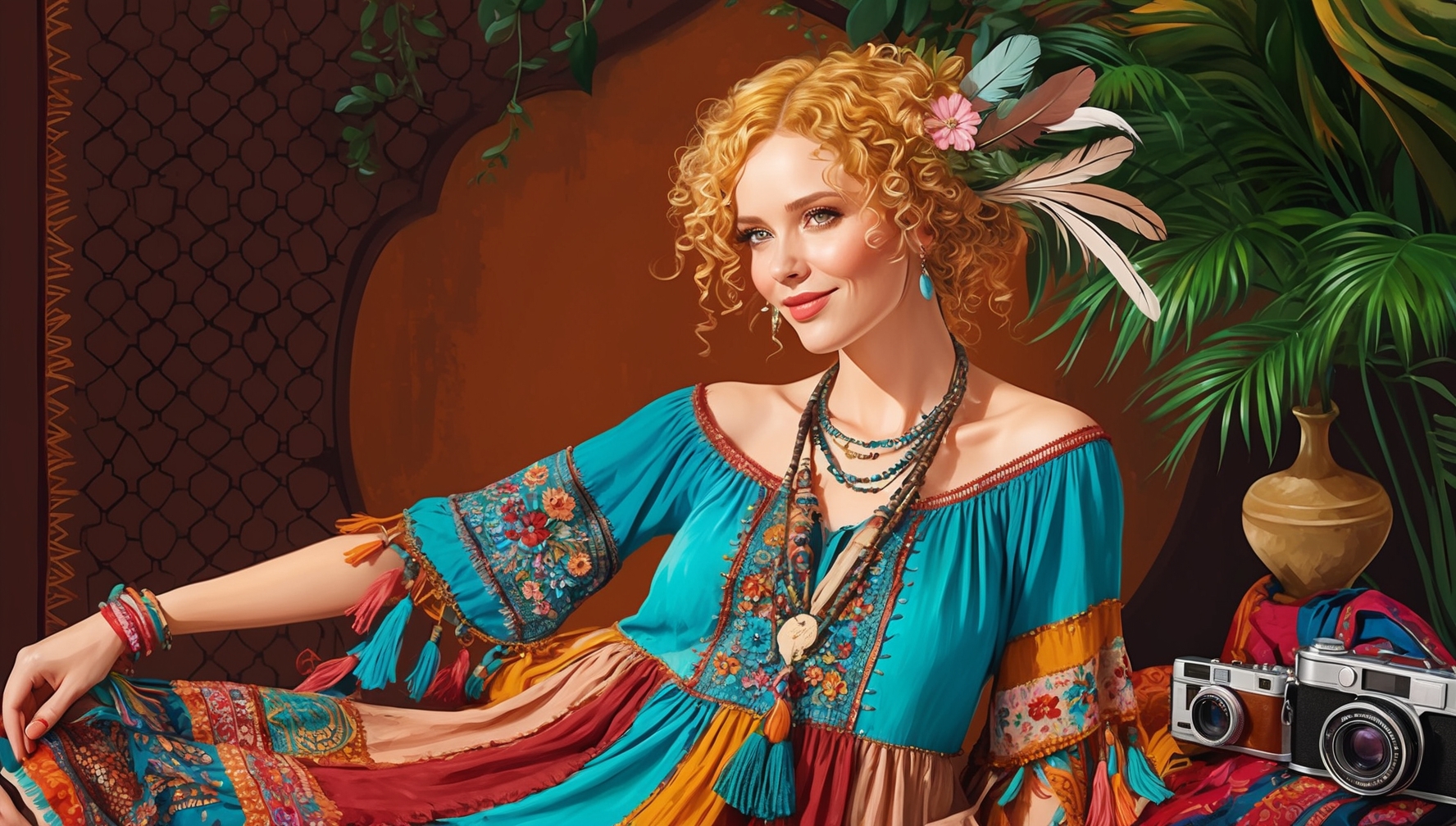Bohemian fashion, often simply referred to as Boho, is more than just a style; it’s a way of life. The essence of Boho fashion lies in its rich cultural influences that span centuries and continents, blending various elements to create something unique and expressive. But what are these cultural influences that shape Bohemian fashion? Let’s break it down.
Roots in the Bohemian Lifestyle
The origins of Bohemian fashion can be traced back to the Bohemian lifestyle of the 19th century in France. During this time, artists, writers, and other creatives adopted a lifestyle that rejected conventional norms. This movement, inspired by the Romani people who migrated from the region known as Bohemia in the modern-day Czech Republic, was characterized by a free-spirited approach to life.
The Influence of the Romani People
The Romani people, known for their nomadic lifestyle, played a significant role in shaping the aesthetic of Bohemian fashion. Their traditional clothing, rich in colors, patterns, and textures, became a symbol of the Bohemian movement. Flowing skirts, embroidered blouses, and layered accessories became staples, reflecting the Romani influence.
Eastern European Folk Traditions
Eastern European folk traditions brought intricate embroidery, lace, and detailed patterns to Boho fashion. The heavy use of these elements in traditional garments found its way into Bohemian style, adding a touch of authenticity and cultural depth. The folk traditions emphasized the use of natural materials, handmade items, and a connection to the earth, all of which are key components of Bohemian fashion.
Impact of the 1960s Counterculture Movement
The 1960s were a pivotal time for the Boho style, as it merged with the counterculture movement. Hippies embraced Bohemian fashion as a form of self-expression and protest against the mainstream. This period introduced elements like tie-dye, bell-bottoms, and fringe, all of which are now synonymous with Boho fashion.
The Hippie Influence
The hippie movement’s embrace of non-conformity and connection to nature deeply influenced Bohemian fashion. Loose-fitting clothing, earthy tones, and a mix of eclectic accessories became popular. The emphasis was on comfort, freedom of movement, and a rejection of materialism, all values that aligned with the Boho lifestyle.
Global Influences: A Blend of Cultures
Bohemian fashion is a melting pot of global influences, borrowing elements from various cultures around the world.
Indian and Middle Eastern Elements
The intricate patterns and rich colors of Indian and Middle Eastern textiles have significantly influenced Bohemian fashion. The use of paisley, mandalas, and other ornate designs became prominent, bringing a touch of exoticism to the style. Additionally, the incorporation of jewelry like bangles, oversized earrings, and layered necklaces added a distinctive flair.
African and Indigenous Inspirations
African prints and indigenous beadwork also made their way into Boho fashion. The bold colors, geometric patterns, and use of natural materials such as shells and feathers introduced a new dimension to the style. These elements reflect a connection to the earth and a celebration of cultural diversity.
Bohemian Fashion Today: Evolving with Time
While Bohemian fashion has its roots in the past, it continues to evolve, adapting to modern influences while retaining its core essence. Today’s Boho style is a fusion of the traditional and the contemporary, making it more accessible and versatile than ever.
Sustainable Fashion and Boho
In recent years, Bohemian fashion has intersected with the sustainable fashion movement. The emphasis on natural materials, handmade items, and vintage finds aligns perfectly with the principles of sustainability. Boho fashion encourages the reuse of clothing, the support of artisans, and the reduction of waste, making it a style that not only looks good but also feels good.
Modern Boho Icons
Today’s Boho fashion is often seen on celebrities and influencers who embrace the style’s free-spirited and eclectic nature. Modern Boho icons include Vanessa Hudgens, Sienna Miller, and the Olsen twins, all of whom have popularized the style in different ways. Their take on Bohemian fashion includes a mix of high-end designer pieces with vintage finds, creating a unique and personalized look.
Key Elements of Bohemian Fashion
To fully appreciate Bohemian fashion, it’s important to understand its key elements:
- Layering: Layering is a hallmark of Boho style. It involves mixing different textures, patterns, and colors to create a rich and visually interesting outfit.
- Flowing Silhouettes: Loose, flowing silhouettes are central to Boho fashion. Think maxi dresses, oversized tunics, and wide-leg pants.
- Natural Materials: The use of natural materials like cotton, wool, and leather is common in Bohemian fashion. These materials are often left in their natural state or minimally processed.
- Vintage and Handmade: Bohemian fashion values vintage and handmade items, which add a unique and personal touch to the style.
- Eclectic Accessories: Accessories are key in Boho fashion. Layered necklaces, bangles, wide-brimmed hats, and oversized sunglasses are just a few of the many accessories that define the style.
- Earthy and Jewel Tones: The color palette of Bohemian fashion is heavily influenced by nature. Earthy tones like brown, green, and beige are common, as are rich jewel tones like burgundy, emerald, and sapphire.
- Embroidered and Patterned Fabrics: Intricate embroidery and bold patterns are often used to add detail and depth to Boho outfits.
Conclusion
Bohemian fashion is a rich tapestry woven from various cultural influences, each contributing to the unique and ever-evolving style that we know today. From the Romani people’s vibrant clothing to the hippie movement’s embrace of freedom, Boho style continues to be a symbol of self-expression and individuality. Whether you’re drawn to its rich history or its modern adaptations, Bohemian fashion remains a timeless and versatile style that resonates with those who seek to express their creativity and connection to the world around them.
